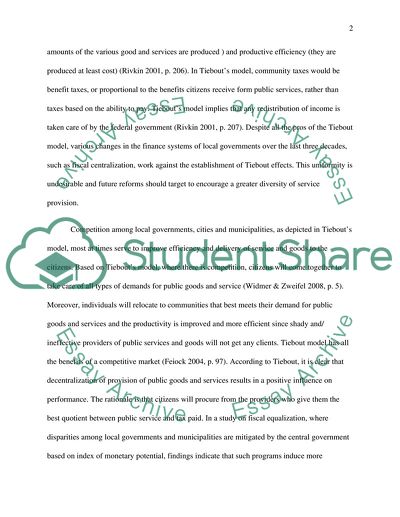Cite this document
(“The System Of Finance For Local Government Essay”, n.d.)
The System Of Finance For Local Government Essay. Retrieved from https://studentshare.org/macro-microeconomics/1587865-the-way-the-system-of-finance-for-local-government-has-evolved-over-the-past-30-years-militates-against-the-establishment-of-tiebout-effects-this-uniformity-is-undesirable-and-future-reform-should-seek-to-encourage-a-greater-diversity-of-service-prov
The System Of Finance For Local Government Essay. Retrieved from https://studentshare.org/macro-microeconomics/1587865-the-way-the-system-of-finance-for-local-government-has-evolved-over-the-past-30-years-militates-against-the-establishment-of-tiebout-effects-this-uniformity-is-undesirable-and-future-reform-should-seek-to-encourage-a-greater-diversity-of-service-prov
(The System Of Finance For Local Government Essay)
The System Of Finance For Local Government Essay. https://studentshare.org/macro-microeconomics/1587865-the-way-the-system-of-finance-for-local-government-has-evolved-over-the-past-30-years-militates-against-the-establishment-of-tiebout-effects-this-uniformity-is-undesirable-and-future-reform-should-seek-to-encourage-a-greater-diversity-of-service-prov.
The System Of Finance For Local Government Essay. https://studentshare.org/macro-microeconomics/1587865-the-way-the-system-of-finance-for-local-government-has-evolved-over-the-past-30-years-militates-against-the-establishment-of-tiebout-effects-this-uniformity-is-undesirable-and-future-reform-should-seek-to-encourage-a-greater-diversity-of-service-prov.
“The System Of Finance For Local Government Essay”, n.d. https://studentshare.org/macro-microeconomics/1587865-the-way-the-system-of-finance-for-local-government-has-evolved-over-the-past-30-years-militates-against-the-establishment-of-tiebout-effects-this-uniformity-is-undesirable-and-future-reform-should-seek-to-encourage-a-greater-diversity-of-service-prov.


